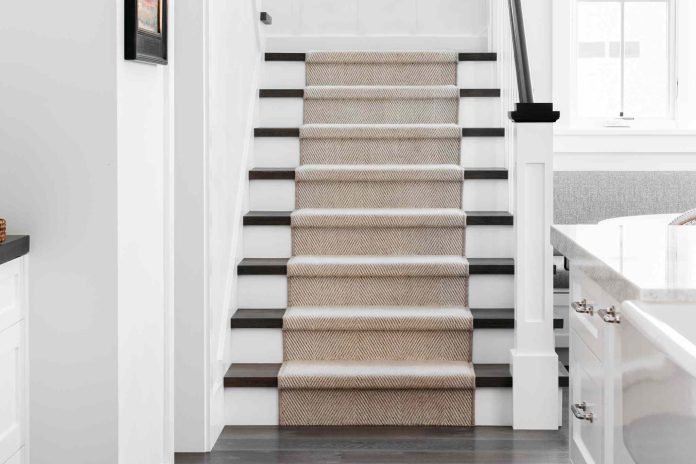Straight Stairs
Installing a stair runner on your straight staircase can add a touch of elegance and comfort to your home. If you want to buy a made-to-measure stair runner online, here’s how to measure your straight stairs so you can order the correct amount.
Measure the Width: Decide how much of the stair you want the runner to cover. Typically, stair runners leave about 4 inches of space on each side. Measure the width of one stair, subtract the desired total uncovered space, and you have the width of your stair runner.
Measure the Depth: Measure the depth of the stair tread (the flat part where you step). Don’t include the nosing (the part of the tread that overhangs the riser).
Measure the Height: Measure the height of the riser (the vertical part of the stair).
Count the Stairs: Count the number of stairs that you want to cover with the runner.
Calculate the Length: Multiply the number of stairs by the sum of the tread depth and riser height. This will give you the total length of the stair runner you need for straight stairs. Now, multiply that by 1.05 and this will give you a safety margin for the carpet going over the nosings.
Winding Stairs
Measuring winding stairs for a stair runner is a bit more complex due to the curve of the stairs. Here’s how to do it:
Measure the Width: As with straight stairs, decide the width of your stair runner. Measure the widest part of the stair tread and subtract the desired total uncovered space.
Measure the Depth and Height: For winding stairs, measure the depth at the widest part of the tread and the height of the riser.
Measure the Curve: For stairs that curve, you’ll need to measure the outer edge of the stair tread, which will be longer due to the curve. Use a flexible measuring tape to follow the curve.
Count the Stairs: Count the number of curved stairs.
Calculate the Length: Multiply the number of curved stairs by the sum of the longest tread depth and riser height. This will give you the total length of the stair runner you need for winding stairs. Now, multiply that by 1.05 and this will give you a safety margin for the carpet going over the nosings.
Remember, it’s always better to overestimate than underestimate when measuring for a stair runner. It’s also recommended to add an extra foot or two to account for any errors or adjustments needed during installation.
Whether you have straight or winding stairs, a well-measured and properly installed stair runner can enhance the beauty and comfort of your home. Happy measuring!













